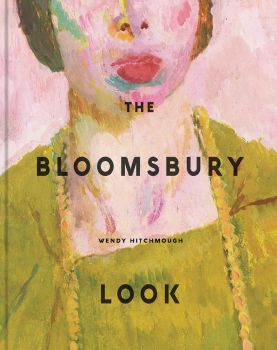Research news
New book explores the visual identity of the famed Bloomsbury Group
By: Stephanie Allen
Last updated: Friday, 6 November 2020

A new book by a Senior Lecturer at the University of Sussex investigates how the famed Bloomsbury Group framed their visual identity.
The Bloomsbury Look (Yale University Press), by Dr Wendy Hitchmough, is the first in-depth analysis of how the group generated and broadcast its self-fashioned aesthetic.
The Bloomsbury Group was a loose collective of forward-thinking writers, artists and intellectuals, counting Virginia Woolf, John Maynard Keynes and E. M. Forster among its members.
The Bloomsbury Group divided their time between London and Sussex, the latter providing a retreat from the pressures of everyday life within which to focus on work. It became a gathering place for friends to come and stay and, in contrast to London, there was no restrictive dress code.
The group’s works and radical beliefs, spanning literature, economics, politics and non-normative relationships, changed the course of 20th-century culture and society.
Although its members resisted definition, their art and dress imparted a coherent, distinctive group identity.
Dr Hitchmough said: “Bloomsbury were one of the most successful groups of the 20th century yet their identity is elusive. There was no manifesto and they denied their own existence as a group when they anticipated criticism.
“But this circle of friends, of free-thinking radicals, provided its members with a safe and stimulating intellectual environment. It enabled them to stand outside society and break through boundaries in their work, whether that was John Maynard Keynes writing The Economic Consequences of the Peace, Virginia Woolf writing Orlando or Vanessa Bell and Duncan Grant founding the Omega Workshops with Roger Fry.”
The Bloomsbury Look is an in-depth study of how the group expressed their liberal philosophies and collective identity in visual form, drawing on unpublished photographs and extensive new research.
One chapter is dedicated to photography, which was essential to the group’s visual narrative – from casual snapshots, to professional studio portraits, to family albums. Others examine the Omega Workshops as a design centre, and the evidence for its dress collections, spreading the Bloomsbury aesthetic to the general public.
Dr Hitchmough explained: “Because we all use dress to project our identity, whether we’re conforming or asserting our individuality, I wanted to understand the dress collections that were on sale at the Omega Workshops, to unpick the details of how they changed over time.
"Vanessa Bell designed a dress collection for Omega in 1915 and refined and revived it two years later. I was surprised to discover that she was pregnant in 1917 and must have miscarried. It was clearly an influence on the empire-line dresses that she developed for the Omega Workshops.”
Charleston is perhaps one of the most famous Sussex locations associated with the group. The home of artists Vanessa Bell and Duncan Grant, it became the centre of Bloomsbury life in the county.
For over 12 years, Dr Hitchmough was curator at Charleston, which is now a museum with a collection of art and archives, alongside an events programme inspired by the values and the work of the Bloomsbury Group.
She said: “My years at Charleston had a profound effect on the way I think about Bloomsbury and its visual culture.
“In part, my understanding of the collection and the history of Charleston as a Bloomsbury home is visceral. I can still smell the rooms there, feel the weight of a painting when you lift it from the wall, recall how cold the house is in the winter, and the sound of birdsong in the studio in the summer.”
The University has a number of links with the Bloomsbury Group, including housing Virginia Woolf’s personal diaries and Leonard Woolf’s archive in its Special Collections at The Keep.